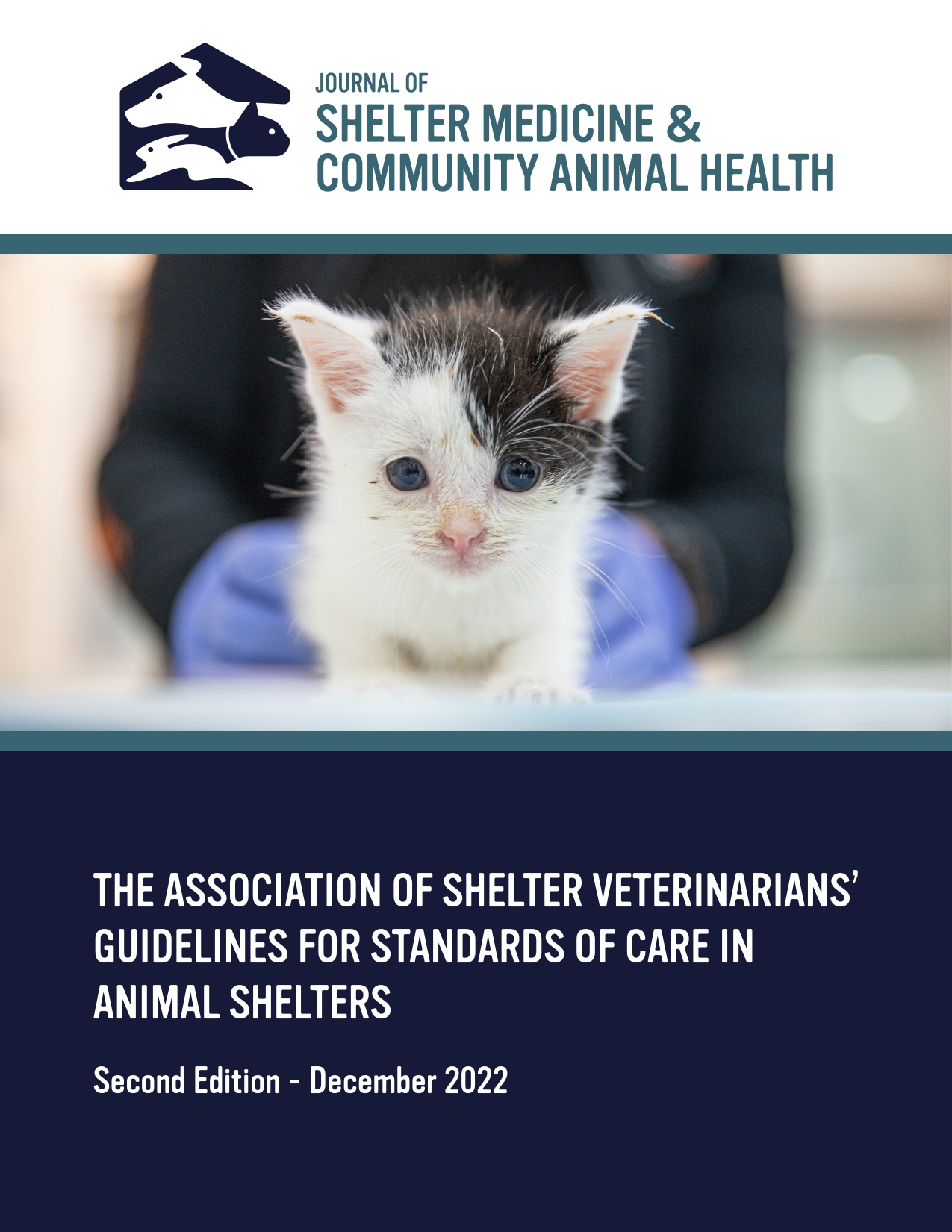Effects of Deferred Puppy Intake on Incidence of Canine Parvovirus Infection and Survival: a Community Case Study [Abstract]
DOI:
https://doi.org/10.56771/jsmcah.v4.140Abstract
Introduction
Many rural community shelters rely on the transfer of clinically healthy puppies to other organizations as a strategy to reduce the risk of a Canine Parvovirus (CPV) outbreak1. This approach potentially puts the receiving organizations at risk of CPV transmission during transport and subsequent introduction of the virus into their own populations. To address these challenges, this report examines the implementation of a deferred intake protocol for puppies transferred from a rural, open-admission shelter to Gigi’s, a well-resourced, managed-intake shelter in Ohio. The primary objectives were to determine if this shift in protocol could:
- reduce the incidence of CPV infections among transferred puppies and
- improve survival rates among those that developed CPV.
Secondary objectives included an analysis of factors associated with CPV incidence and survival rates, including intake type, duration of time spent in puppy-specific housing at the originating shelter, and the timing of CPV detection in relation to the transfer process.
Case Description
In November and December of 2023, Gigi’s medical staff noted an increase in CPV infections in dogs who had been transferred from a single rural shelter partner. This prompted an intake protocol shift for dogs from this shelter. The primary protocol changes involved increasing transfer frequency from biweekly to weekly and requesting that local community members surrendering stray or unwanted puppies retain custody until the next scheduled weekly transport. This strategy minimized the risk of CPV exposure by eliminating the need to house puppies at the partner shelter. If community housing was not an option, the puppy was housed in the designated Puppy room at the partner shelter until the next scheduled transport day. Puppies showing clinical signs of CPV at any point before, during, or after transfer had stools immediately tested for CPV. Puppies testing positive were isolated and treated at Gigi’s adjacent Parvo Treatment Center which has been treating CPV according to established standards of hospitalized care2 in addition to a single intravenous dose of a commercially available monoclonal antibody treatment3 since July, 2023.
Data analysis
To determine effects of the protocol change, records were reviewed for all puppies transferred from this single partner shelter to Gigi’s between November 6, 2023, to February 20, 2024. Data on Non-deferred (November 6 to December 16, 2023) and Deferred (December 17, 2023, to February 20, 2024) puppies were compared for CPV incidence and survival, as well as intake type, timing of CPV diagnosis, and Puppy room housing.
Outcomes
After implementation of the deferred intake protocol, CPV incidence in puppies transferred from this partner shelter decreased from 47% (18/38) to 9% (9/103); (P<0.001). Survival rates for puppies who developed CPV were not statistically different for Non-deferred puppies (13/18; 72%) compared to Deferred puppies (8/9; 89%); (P=0.17). Overall survival rates did correlate significantly with timing of CPV detection as puppies developing CPV after transport (18/18; 100%) were more likely to survive than those diagnosed prior to transport (3/9; 33%); (P<0.001). Stray puppies (20/64; 31%) were more likely than owner-surrendered puppies (7/77; 9%) to develop CPV infections (P<0.001). Puppies with a history of being housed in the partner’s Puppy room were 13 times more likely to develop CPV infections than puppies who had no history of being housed in the Puppy room [20/40; 50% vs. 7/10; 7% (P<0.0001; OR= 13.4, CI=5.01-36.02)].
Conclusion
Minimizing the time young puppies are shelter-housed is a critical consideration for organizations collaborating with under-resourced, rural shelter partners. Engaging local community members as part of this process may provide an effective strategy in achieving this goal. Overall CPV survival results highlight the importance of early diagnosis and prompt treatment at the onset of clinical signs, further supporting the need to house puppies near veterinary care. While frequent, deferred intake programs may significantly reduce CPV incidence during existing outbreaks, proactive deferment programs during known peak CPV seasons could also help preemptively mitigate future outbreaks.
Financial Support and Conflict of Interests
MH has provided speaking and consultation services for Ceva, Elanco, Fear Free, Virbac, and Virox Technologies. Expenses for transportation, housing, and all medical care provided for the puppies at Gigi’s were funded by a generous donation from George and Tina Skestos.
Downloads
References
1. DiGangi B A, Craver C, Dolan E D. Incidence and predictors of canine parvovirus diagnoses in puppies relocated for adoption. Animals. 2021; 11(4):1064
2. Njenga M K, Nyaga P N, Buoro I B J, Gathumbi P K. Effectiveness of fluids and antibiotics as supportive therapy of canine parvovirus-2 enteritis in puppies. Bull Anim Health Prod Afr. 1990; 38: 379-389
3. Canine Parvovirus Monoclonal Antibody (CPMA) product insert, Elanco, 2023.
Published
Issue
Section
License
Copyright (c) 2025 The Authors

This work is licensed under a Creative Commons Attribution 4.0 International License.










